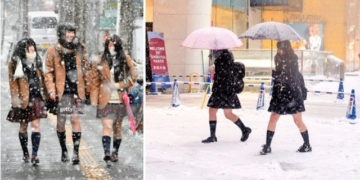In the context of increasingly unpredictable natural disasters such as storms, floods, and earthquakes, travelers need to incorporate disaster preparedness plans into their travel itineraries.
According to estimates from the United Nations World Tourism Organization (UN Tourism), global tourism is expected to almost fully recover in 2024 following the shock of Covid-19, despite a series of climate disasters ranging from devastating wildfires in Greece to warnings of major earthquakes in Japan.
Travel seasons are no longer as defined; more and more people are traveling at all times of the year, leading to less significant seasonal fluctuations in tourist numbers, and the “privilege” of off-peak seasons is fading.

Consequences of the earthquake on April 4 in Taiwan (China). (Photo: Annabelle Chih).
However, this surge in travel is facing numerous challenges, including increasingly unpredictable natural disasters.
Jon Porter, a meteorologist at the weather forecasting company AccuWeather, stated: “Climate change along with weather threats is becoming more severe. Do not be complacent even when the weather seems quite favorable.”
Experts indicate that the Earth is experiencing a record-setting streak of 14 consecutive months of high temperatures, leading to prolonged heatwaves, wildfires, droughts, floods, and landslides.
Preparing for the Unexpected
Many people often begin their trips with a mindset of “leaving fate to the gods.” But that is not a wise approach.
In fact, there are several simple preparations that travelers can make to be more proactive, such as downloading weather forecasting apps or disaster alert apps for their intended destination.

Understanding the terrain and weather of the destination helps travelers be better prepared in case of a disaster. (Photo: Atlantic).
Travelers can refer to the Global Disaster Coordination and Warning System, a joint project between the United Nations and the European Commission, which provides real-time global disaster alerts for the upcoming four days.
Additionally, common practices before each trip should be maintained, such as sharing itineraries with family or close friends, making multiple copies of important documents like passports, and so on.
Moreover, seeking out social media accounts of local organizations that provide emergency alerts, purchasing travel insurance, or preparing satellite phones are also beneficial actions.

Every traveler should prepare an emergency kit in their personal luggage. (Photo: Kit Pro).
The Federal Emergency Management Agency (FEMA) in the United States recommends that travelers prepare an emergency kit that includes non-perishable food, a first aid kit, a flashlight, a portable charger, and more.
What to Do in a Disaster?
The first thing every traveler needs to do is assess the situation before taking action. If you are in a hotel, keep in contact with local authorities as they are one of the most reliable sources of information.

Travelers need to keep in touch with local authorities for support. (Photo: SCMP).
“It is important to listen to local officials. Additionally, stay updated through radio, television, social media, and other local news sources,” said Jaclyn Rothenberg, Public Relations Director at FEMA.
If events unfold too quickly and you are outside when a disaster strikes, look for high ground for shelter if facing floods or tsunamis. If it is an earthquake, stay away from buildings.
In cases of wildfires or volcanic eruptions, seek out items like masks to cover your mouth and nose.
If phone lines are down and communication is lost after you have found a safe place, use social media to inform others you are safe, helping to alleviate the worries of family and friends.


















































